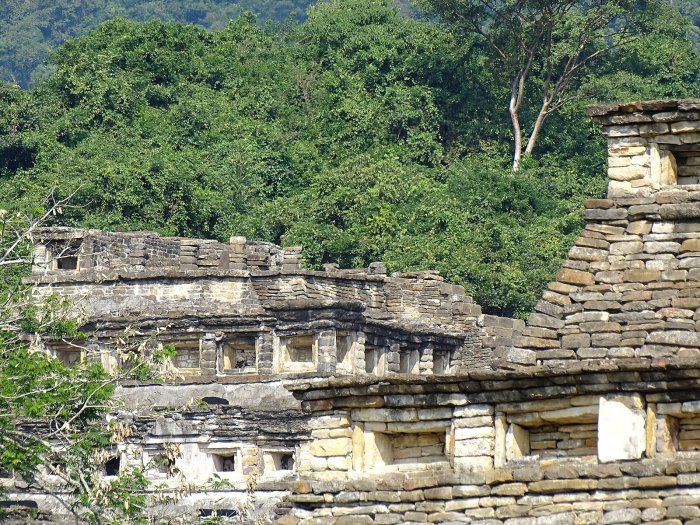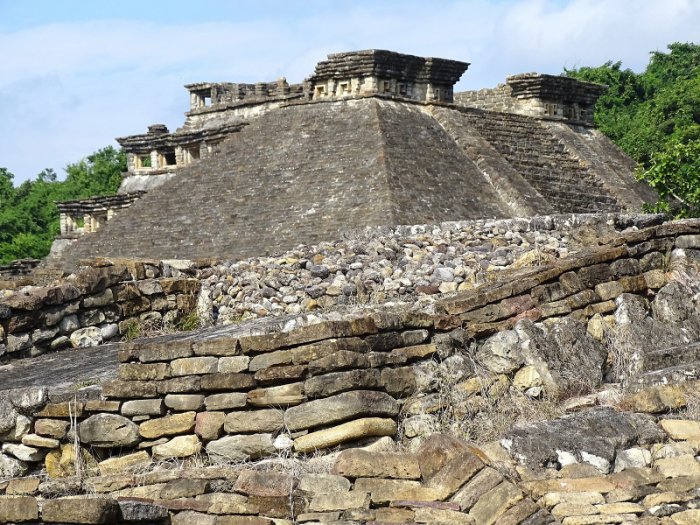Intriguing El Tajin – Pre-Hispanic Ceremonial Site Dedicated To Totonac Rain God
A. Sutherland - AncientPages.com - After Teotihuacan Empire eventually went into decline around 600- 700 CE, the Pre-Hispanic City of El Tajin (“place of the invisible beings or spirits”) became the most important center in northeast Mesoamerica. A long time ago, it was dedicated to the Totonac rain god, a deity who was very similar to Tlaloc, the old god of the Aztecs associated with rain.
El Tajín, a Totonac ruin in the municipality of Papantla, Veracruz, Mexico. IMage credit: Jacob Rus (2004) - CC BY-SA 2.0
Located in the state of Veracruz, among jungle-covered hills in a region occupied by the Totonac Indians, the city flourished from the early 9th to the early 13th century.
El Tajín is considered one of the best-preserved ancient sites in southern Mexico.
The name of this ancient city is very interesting. To the locals, the site was known as El Tajín, which was said to mean “of thunder or lightning bolt”. People believed that twelve old thunderstorm deities, known as Tajín, still dwell in the ruins. However, several indigenous maps dated to the Spanish conquest, suggest that the city might have been called ‘Mictlan’ (‘place of the dead’).
On the other hand, according to surviving Aztec records found in the Codex Mendoza, the Totonac people claimed that El Tajín also means - “place of the invisible beings or spirits”.
Sculptures in one of the ball courts at El Tajín. Image credit: Simon Burchell - CC BY-SA 3.0
El Tajín had only one period of occupation, lasting from 800 to 1200 AD and was inhabited by about 15,000 - 20,000 people. After 1200 AD, it was abandoned and partly destroyed, when the region came under the rule of the powerful Aztec empire. The structures of El Tajin constitute proof of the advanced engineering skills of Mesoamerican builders.
Several buildings of the city reveal the astronomical and symbolic significance; they are also richly ornamented with paintings, low reliefs, cornices, and niches decorated with the spiral motif.
The reliefs and paintings discovered at the site shed light on the daily life of these ancient people and their rituals as well.
Among the most impressive structures, there is the Pyramid of the Niches, named for the approximately 365 recesses on its four sides and recorded in 1785. The pyramid has the name 'El Tajin' (exactly the same as the city), which means place of “of thunder or lightning bolt” but it even refers to the god of rain.
It is one of the columns of the Tajín in Veracruz. Image credit: Ivanpares - CC BY-SA 3.0
Among the most impressive structures, there is the Pyramid of the Niches, named for the approximately 365 recesses on its four sides and recorded in 1785The architecture includes the use of decorative niches and cement in forms unknown in the rest of Mesoamerica.
It took time before the first research works began in El Tajin in 1935. Mexican archaeologist Augustin Garcia Vega was the first to discover that the large city’s Pyramid of the Niches was definitely not the only structure, but there were several other large buildings scattered across the area, such as the palaces of Tajín Chico and the city's twenty ball courts, of which the Arroyo Group (the North and South Ball courts) are the best known.
On their vertical playing surfaces of the ball courts, there are carved reliefs, providing researchers with valuable knowledge about the religious connotations of the sacred game widely practiced by the ancient Maya.
El Tajin Archaeological Site - Veracruz - Mexico. Image credit: Adam Jones - CC BY-SA 2.0
A further exceptional element is the building in the form of a Xicalcoliuhqui motif that appears on temples and other buildings also in archaeological places around Mexico, but it definitely is unique in Mesoamerica.
The Tajín Chico complex - constructed on an artificial mound 7 m high - is a large acropolis with many palaces and other civil structures but only a few temples. It once belonged to the center of El Tajin city. Especially interesting is Building A, which is the most richly decorated of all structures in El Tajin.
El Tajin Archaeological Site - Veracruz - Mexico. Image credit: Adam Jones - CC BY-SA 2.0
However, the Tajín Chico complex has not been fully excavated, but so far, one of the buildings in the area is particularly interesting, and it is Building A, which represents smaller ball courts at each of its four corners, and has a Mayan style arch at the southern access.
It is also the most richly decorated building in El Tajín, with vertical bands of relief and beautiful friezes. In Tajín, the plazas are rectangular while in Tajín Chico they are mostly trapezoidal.
El Tajín flourished until the early years of the 13th century. Then it was destroyed by fire, probably started by an invading force believed to be the Chichimecs (the Nahua peoples of Mexico often referred to as nomadic and semi-nomadic peoples who lived in the present-day Bajio region of Mexico.
El Tajín was left to the jungle, covered with vegetation for more than 500 years, until the 19th century, when archaeological excavations revealed the lost history of El Tajin and showed that a village existed here at the time the Spanish arrived, and the area has always been considered sacred to the Totonacs.
Written by – A. Sutherland - AncientPages.com Senior Staff Writer
Updated on Nov 3, 2024
Copyright © AncientPages.com All rights reserved. This material may not be published, broadcast, rewritten or redistributed in whole or part without the express written permission of AncientPages.com
Expand for referencesMore From Ancient Pages
-
 Echidna – Mother Of All Monsters – A Cave-Dwelling Female Hybrid Creature In Greek Mythology
Featured Stories | Jan 13, 2022
Echidna – Mother Of All Monsters – A Cave-Dwelling Female Hybrid Creature In Greek Mythology
Featured Stories | Jan 13, 2022 -
 USC Archeologist Discovers Maya Royal Burial Site
Archaeology | Jan 9, 2016
USC Archeologist Discovers Maya Royal Burial Site
Archaeology | Jan 9, 2016 -
 First Early Roman Fortlet Found On The Isle of Anglesey, North Wales
Archaeology | Nov 26, 2015
First Early Roman Fortlet Found On The Isle of Anglesey, North Wales
Archaeology | Nov 26, 2015 -
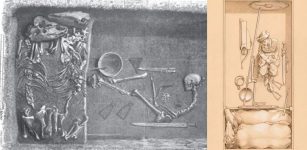 Birka Warrior Was A Woman – DNA Reveals
Archaeology | Feb 15, 2018
Birka Warrior Was A Woman – DNA Reveals
Archaeology | Feb 15, 2018 -
 Saraswati – Hindu Goddess Of Knowledge, Learning And Vedic Symbol Of Speech, Vach
Featured Stories | Jun 23, 2021
Saraswati – Hindu Goddess Of Knowledge, Learning And Vedic Symbol Of Speech, Vach
Featured Stories | Jun 23, 2021 -
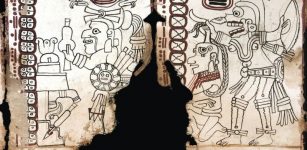 Once Looted Nearly 1,000-Year-Old Maya Text Is Authentic – Mexican Experts Say
Archaeology | Sep 1, 2018
Once Looted Nearly 1,000-Year-Old Maya Text Is Authentic – Mexican Experts Say
Archaeology | Sep 1, 2018 -
 Biblical Event Verified By Study Of Earth’s Magnetic Field?
Archaeology | Jan 4, 2024
Biblical Event Verified By Study Of Earth’s Magnetic Field?
Archaeology | Jan 4, 2024 -
 The Prophecy Of The Rainbow Warriors And Future Of Planet Earth
Featured Stories | Aug 29, 2018
The Prophecy Of The Rainbow Warriors And Future Of Planet Earth
Featured Stories | Aug 29, 2018 -
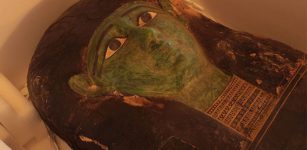 Looted Green Coffin Of Ancient Egyptian Priest Returned To Egypt From US
Archaeology | Jan 2, 2023
Looted Green Coffin Of Ancient Egyptian Priest Returned To Egypt From US
Archaeology | Jan 2, 2023 -
 On This Day In History: ENIGMA The Secret Code Used By Germans Was Finally Broken- On July 9, 1941
News | Jul 9, 2016
On This Day In History: ENIGMA The Secret Code Used By Germans Was Finally Broken- On July 9, 1941
News | Jul 9, 2016 -
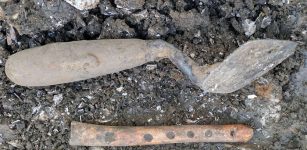 Fascinating 3,000-Year-Old Artifacts Found At Herne Bay, Kent, UK
Archaeology | Jun 24, 2022
Fascinating 3,000-Year-Old Artifacts Found At Herne Bay, Kent, UK
Archaeology | Jun 24, 2022 -
 Prehistoric Spread Of Millet From East Asia To Central Europe – New Study
Archaeology | Jun 10, 2022
Prehistoric Spread Of Millet From East Asia To Central Europe – New Study
Archaeology | Jun 10, 2022 -
 Riddle Of The Ancient Lost City Beneath Missouri – A Puzzling Discovery
Civilizations | Mar 21, 2022
Riddle Of The Ancient Lost City Beneath Missouri – A Puzzling Discovery
Civilizations | Mar 21, 2022 -
 Ancient Liangzhu Culture Collapsed Due To Climate Change – New Study Says
Archaeology | Nov 25, 2021
Ancient Liangzhu Culture Collapsed Due To Climate Change – New Study Says
Archaeology | Nov 25, 2021 -
 Ancient Egyptians Had A Different Definition Of ‘Foreigners’
Ancient History Facts | Apr 14, 2018
Ancient Egyptians Had A Different Definition Of ‘Foreigners’
Ancient History Facts | Apr 14, 2018 -
 Prehistoric Dispilio: Accurately Dating Ancient Site To 5259 BC Using Cosmic Rays
Archaeology | May 21, 2024
Prehistoric Dispilio: Accurately Dating Ancient Site To 5259 BC Using Cosmic Rays
Archaeology | May 21, 2024 -
 Mystery Of The Minoan Blue Monkeys Depicted In Frescoes
Archaeology | Apr 16, 2020
Mystery Of The Minoan Blue Monkeys Depicted In Frescoes
Archaeology | Apr 16, 2020 -
 On This Day In History: Declaration Of Independence Of The Mexican Empire Is Drafted – On Sep 28, 1821
News | Sep 28, 2016
On This Day In History: Declaration Of Independence Of The Mexican Empire Is Drafted – On Sep 28, 1821
News | Sep 28, 2016 -
 New Details On Neanderthals – Revealed By Museum Exhibition In Norway
Archaeology | Jun 16, 2023
New Details On Neanderthals – Revealed By Museum Exhibition In Norway
Archaeology | Jun 16, 2023 -
 8,000-Year-Old Yarmukian ‘Mother Goddess’ Figurine Discovered In Israel
Archaeology | Jul 18, 2022
8,000-Year-Old Yarmukian ‘Mother Goddess’ Figurine Discovered In Israel
Archaeology | Jul 18, 2022




